How To Clean Your Chain

A necessary evil
With the exception of the most enthusiastic mechanics, cleaning a motorcycle’s chain ranks right up there next to scooping out a litter box for most riders. It’s a messy-but-necessary task that, while it doesn’t stink of cat pee, scores really low on the chore/payoff ratio. Most chain lubes give dirt and dust a great place to latch on to the chain. These abrasive particles can wear out the O-rings prematurely, shortening the chain’s life. So, along with regular lubrication, your chain needs to be cleaned periodically. This is also a good time to take care of the mung that builds up on sprockets, too.
Begin with your bike on a stand so that the rear wheel can spin freely. If you don’t have a rear stand or the ability to use a rear stand, you could use something like a TiRox SnapJack to lift the rear wheel. Cover the work area below the chain with a washable absorbent mat (my Absorb-It Mat is 10 years old and still going strong) or just a bunch of newspapers. You’ll also need a piece of cardboard to slide behind the chain to keep the cleaner overspray from getting all over the bike.
Motorcyclists have used WD-40 to clean bike chains for years, and it does a remarkable job. The solvent portion of WD-40 melts away built-up grunge like butter under hot water. Unfortunately, WD-40 is also a terrific penetrant, which works its way past a chain’s O-rings and allows that fantastic solvent to melt away the grease the O-rings are supposed to protect. So, if you want your chain to last as long as possible, don’t use WD-40 to clean your chain! Or only use it in a very particular way that will be described later in this article. In the past, factory service manuals recommended soaking dirty chains in kerosene. It is great for the job, but today’s endless chains make the practice impractical.
You should use a dedicated chain-cleaning product. You can find them from most of the major motorcycle chemical manufacturers. I have used either Motorex Chain Cleaner or Motul Chain Cleaner for years on chains that are only mildly dirty. These cleaners simply spray on and wash away the dirt and lube, requiring just a quick wipe with a shop rag to finish the job. If you’re doing just a quick cleaning, don’t try to speed up the process by wiping down the chain with the engine rotating the rear wheel. All it takes is a moment’s inattention, and you could be picking up your fingertips off the ground. Far too many mechanics are missing fingers (or parts of fingers) because of this error. Don’t believe me – and have a strong stomach – take a look at these pictures of the motorcycle shark bite.
For really dirty chains, I’ve used Maxima CleanUp Chain Cleaner. The difference with the Maxima cleaner is that you rinse it off with water – a step I really hate to perform if I don’t have to. (Hence my use of the aforementioned cleaners for only mildly dirty chains.) For this article, I used Pro Honda Chain Cleaner because my local shop was sold out of the Maxima cleaner. While the Honda cleaner rinses off with water, it didn’t do so as easily as the Maxima and required some additional effort, but in the end, the chain was just as spotless.
Slide a piece of cardboard behind the chain and liberally spray the chain. While you can spray the entire chain before scrubbing it with a brush, I prefer to work in six-inch sections, spraying and scrubbing before moving on. There are several chain-scrubbing brushes available, but I tend to use just any old soft plastic bristled brush or even old toothbrushes to break free the mung. If necessary, a second spray of the cleaner will wash away the lube you scrubbed free with the brush. Repeat for the entire chain.
After you’re done with the scrubbing with the rinse-away cleaner, gently hose off the chain. Don’t use a high-pressure stream. Instead, let the water flow over the chain. Once the cleaner has been rinsed away, the chain needs to be dried and, since it’s completely unprotected, relubricated. Take your bike for a short ride. Ten minutes should dry the chain and warm it up to allow the lubricant to penetrate it. Then pop it back on a stand and spray on a coat of chain lube. Don’t soak it. The excess will just fling off and make a mess. If you don’t know how to properly oil your chain, I’ll be writing up another how to article soon.

Like most of the best happenings in his life, Evans stumbled into his motojournalism career. While on his way to a planned life in academia, he applied for a job at a motorcycle magazine, thinking he’d get the opportunity to write some freelance articles. Instead, he was offered a full-time job in which he discovered he could actually get paid to ride other people’s motorcycles – and he’s never looked back. Over the 25 years he’s been in the motorcycle industry, Evans has written two books, 101 Sportbike Performance Projects and How to Modify Your Metric Cruiser, and has ridden just about every production motorcycle manufactured. Evans has a deep love of motorcycles and believes they are a force for good in the world.
More by Evans Brasfield





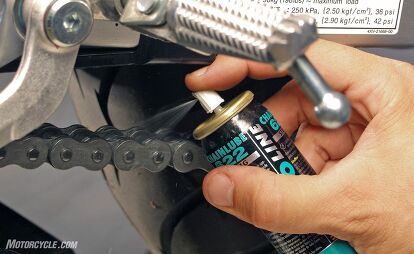






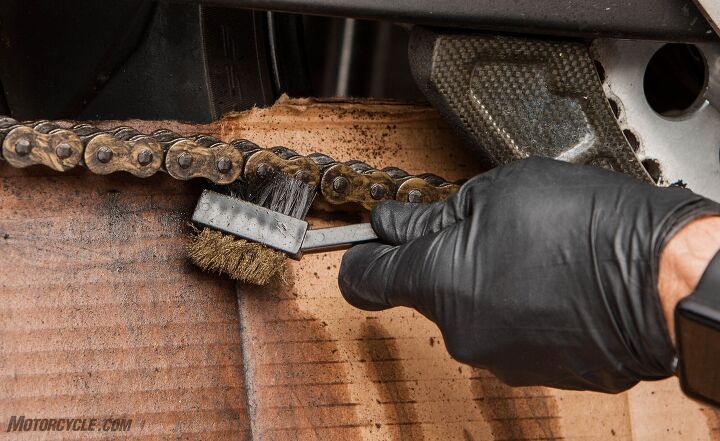











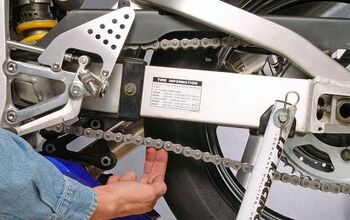

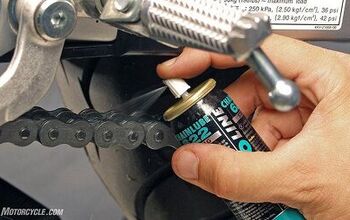

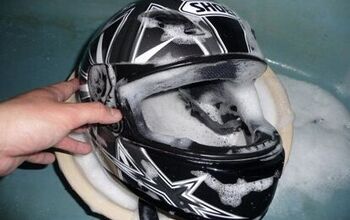












Comments
Join the conversation
Nice Job on this tech story. I would add that the use of a Wheel Jockey from www.wheeljockey.com will make the job much easier if your bke does not have a center-stand. Three sizes made to accommodate any size bike.
If you are insane like me, an electric leaf blower is great for blasting water out of the chain after washing the bike. I do this with the dirt bike as it gets washed a lot more than the street bike does.
Great advice too about the nylon bristle brush. You can get these cheap at any hardware store. They work far better than a wire brush. Only took me about 30 years to figure out that one! ;)
WD40 is great for cleaning chain goo off the rear wheel. It does tend to attract a fine layer of dirt though. Soap and water gets rid of that.